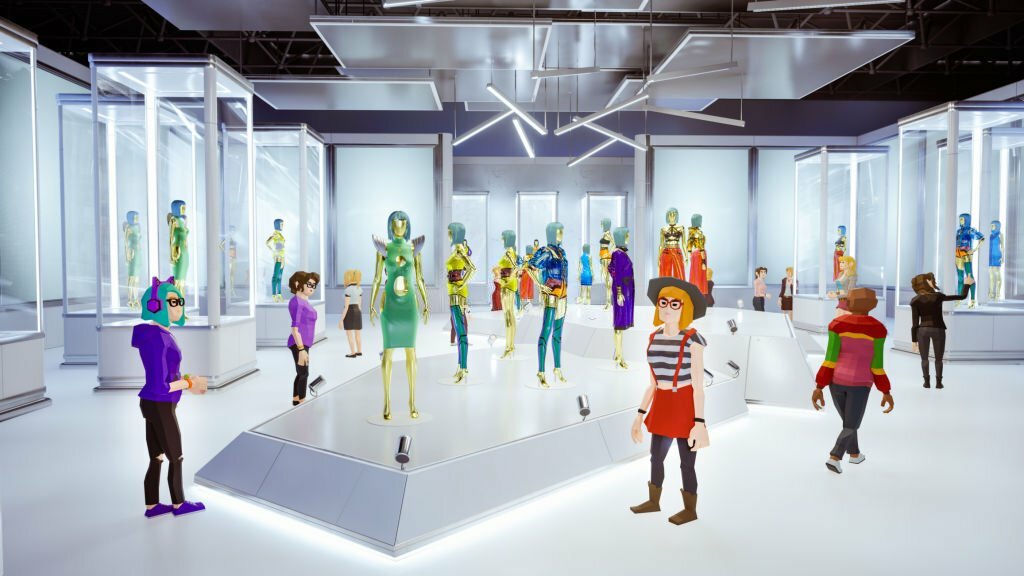In the current digital age, animation is the ideal medium for connecting and conveying messages to your audience. Whether you’re launching a new product, educating your audience, or telling a compelling tale, the animation style you choose can make a big difference.
A properly focused animation will provide a positive consequence, while the reverse will produce no negative results. However, choosing the correct animation style for your message can be difficult.
So in this article, we focus on animation, many types of animation, and how to choose an acceptable animation style that yields a result.
What is an animation style?
Animation is a type of moving imagery that creates the illusion of motion by using a series of still pictures or frames. It is a good and intriguing kind of visual expression that encompasses a wide range of styles and approaches. Traditional animation, as shown in early cartoons, relies on hand-drawn frames, but modern approaches frequently use computer-generated imagery (CGI) or a combination of both.
It is used for a variety of purposes, ranging from amusement in films and television shows to instructive and instructional resources. It has adapted to changing technology by incorporating 2D and 3D animation, stop motion, and other imaginative approaches, which has contributed to its widespread use and appeal.
We will look at the most common animation styles that you should be aware of.
The 10 Animation Styles You Need to Know About
2D Animation
This is one of the most prevalent video marketing styles. Computer software that employs vectors to easily animate shapes is used to generate images.
It’s a type of animation that creates clean, sharp, and dynamic 2D graphics. It’s very useful for simple storytelling, animations, and anything else when you need a quick and easy approach to communicating an idea.
Aside from its adaptability, another significant advantage of 2D vector animation is its low cost. It’s a far more streamlined process than 3D animations, providing a quick and easy way to put ideas into videos that generate results.
3D Animation
This, sometimes known as GGI (computer-generated imagery), has surpassed conventional hand-drawn animation as the most popular format for animated films. It’s similar to 2D vector animation, except instead of a flat image, you use 3D objects such as characters, props, and places.
After these have been digitally made, animations can be swiftly created using software that interpolates the movements between each frame. It’s most commonly connected with Pixar films like Toy Story and The Incredibles.
However, as techniques and technology progress, 3D animation can now accommodate almost any appearance or style. It works especially well with instructional or illustrative videos that highlight items or designs.
Stop Motion Animation
It’s famous on children’s TV shows like The Clangers and Magic Roundabout for being created with puppets being moved and photographed continuously in stop-motion.
While digital methods have made it possible to animate objects more quickly, stop-motion has persevered. It has a tactile and homey sense that is difficult to replicate digitally.
Another benefit is its accessibility and adaptability. It can be used to create characters and narratives, as well as to make real-world items come to life. The simplicity fosters creativity and the exploration of novel methods to bring static items to life.
Whiteboard animation
The international shipping giant UPS debuted a series of movies in 2007 featuring a presenter drawing pictures on a whiteboard to describe their services.
Although the originals included a person drawing on a board, the majority of the subsequent versions used a computerized method to create the same style and feel. This kind of storytelling, which uses straightforward visuals to illustrate complicated concepts, works especially well for explainer videos.
This particular style has fallen prey to its popularity. Doodle movies, sometimes referred to as whiteboard animations, grew so popular that they ran the risk of becoming visual clichés. However, the fact that they work is what makes them popular.
Claymation
A subset of stop motion, Claymation utilizes clay or plasticine models for characters and settings. It was the technique employed in all of the early Aardman Animation films.
And, even though digital animated models are now a much easier alternative, claymation is still going strong. This is due to the emotion that arises from artifacts shaped by human hands. It’s the minor flaws, like the occasional wobble and fingerprints on the clay models.
Retro Animation
Retro animations aim to tap into the emotional impact of classic animations. It could be the severely pixelated appearance of ancient arcade games or the style of a popular children’s television show.
It’s a strategy that can be especially effective when a certain population is targeted. It’s a way to connect with people by using a visual style that they enjoy.
While retro animation can be sentimental, the simplistic styles are easily replicated using digital technologies.
Motion Graphics
Motion graphics focus on animated graphic design elements, often without characters. It’s commonly used in title sequences, commercials, and informational videos. The style relies on visual effects, typography, and dynamic imagery to convey information in a visually compelling way.
Cut-out Animation
Cut-out Animation style has been employed for numerous children’s shows, giving the impression of a storybook coming to life. While South Park has kept the same style, it is no longer crafted with paper, scissors, and patience but is now done digitally.
It is a fast and effective approach to producing characterful animations by making a digital counterpart of the paper cutouts. It’s a common method in explainer videos and narrative-based marketing videos that require minimal character animations.
Live-Animated
This combines digital photos with live footage. Adding a floating label to an object or utilizing animated arrows and markers to help clarify what’s observed in real-world film could be examples of this.
It means that on-screen images can be tagged with graphical elements, and the associated graphic elements move with the camera. By eliminating the need to manually track the movements, it opens up a whole new world of creative possibilities.
Screencast Animation
Animations in screencasts are a nice illustration of this. It’s a method for transforming screen captures into entertaining, interesting, and informative videos.
The main purpose of this is to demonstrate how software UI works with screenshots of software or services in operation. These can be combined with overlays and narration to provide a more engaging experience than merely staring at a screen.
How to Choose the Best Animation Style
Whether you’re creating content for marketing, education, or entertainment, this step will help you select the best animation style for your message.
Understand Your Target Market: Understanding your target audience is the first step in selecting a suitable animation style. Consider their age, preferences, and cultural background. Younger audiences may respond well to vivid and lively cartoons, while a more mature audience may enjoy a refined and subtle approach. Adapting your animation style to your audience creates resonance and connection.
Define Your Message: Clearly defining your message is essential before choosing an animation style. Is your message light-hearted or serious? Is it informational or entertaining? Knowing the purpose and tone of your message helps guide your animation style choice.
Match Style to Brand Identity: If your animation is part of a branding strategy, align the style with your brand identity. Consistency in visual elements helps strengthen brand recognition. Consider incorporating your brand colors, logo, and overall aesthetic into the animation. This creates a cohesive and unified brand image across different communication channels.
Explore Different Animation Styles: Don’t limit yourself to a single animation style. Experimenting with various styles allows you to discover what resonates best with your audience and message. Try 2D animation for a classic and versatile look, 3D animation for a more immersive experience, or stop-motion for a unique and tactile feel. Each style has its charm, and the key is finding the one that complements your message.
Test and Gather Feedback: Before finalizing your animation style, conduct tests or gather feedback from a sample audience. This can be particularly useful in fine-tuning the style to better match your message and audience preferences. Keep an open mind and be willing to make adjustments based on constructive feedback.
Conclusion
In conclusion, selecting the ideal animation for your project is a crucial choice that could positively or negatively affect its outcome. However, utilizing the aforementioned pointers will help you along the way.
Keep in mind that your project’s animation must effectively communicate your message to the viewer. In need of assistance with animation? Talk with Elior.

